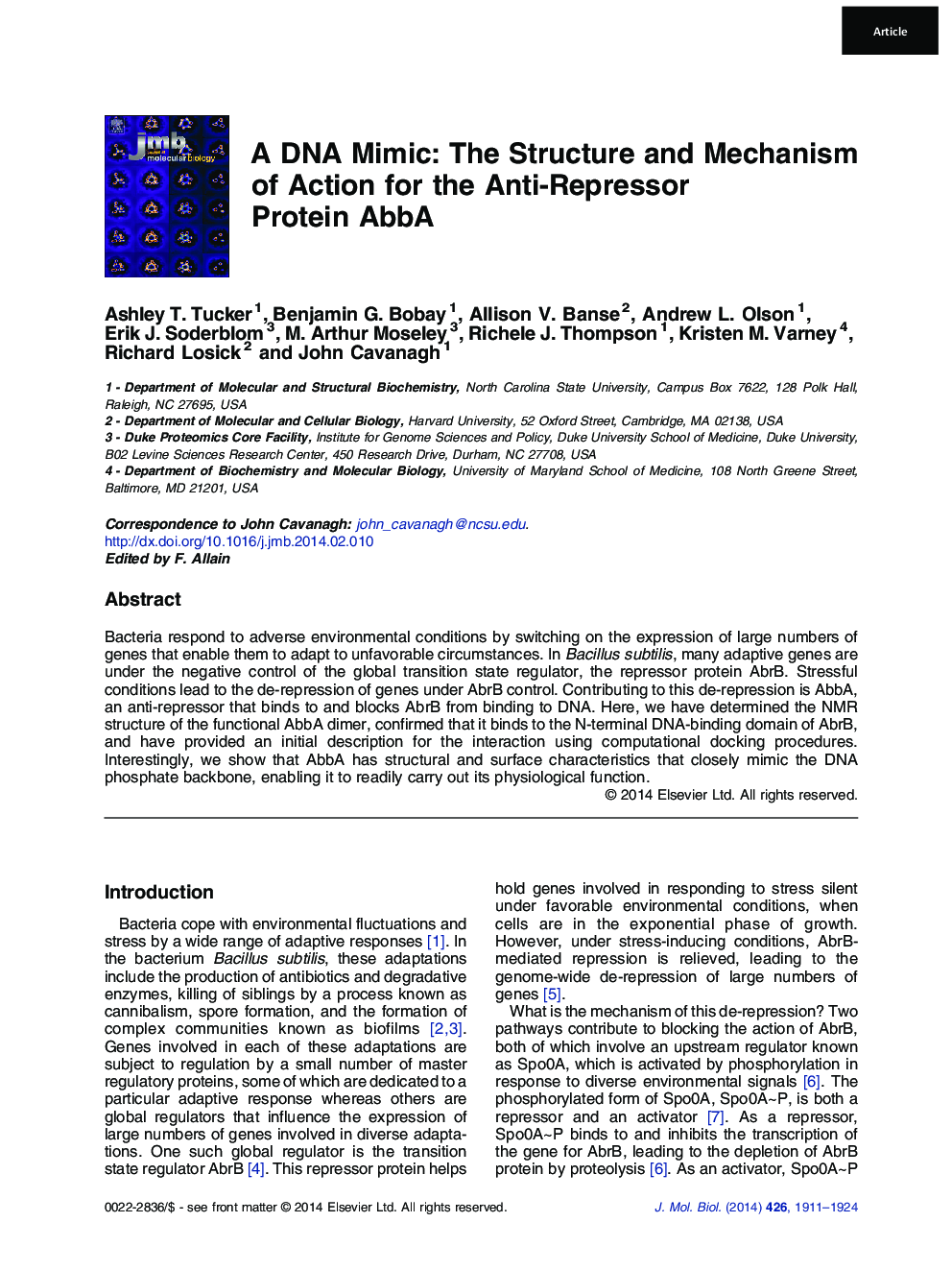| Article ID | Journal | Published Year | Pages | File Type |
|---|---|---|---|---|
| 2184646 | Journal of Molecular Biology | 2014 | 14 Pages |
•The structure and mechanism of the anti-repressor AbbA was previously unknown.•AbbA binds to AbrB's DNA-binding domain with similar affinity to DNA.•Mutagenesis shows AbbA interacts with AbrB's critical DNA-binding residues.•AbbA has structural characteristics that mimic a DNA phosphate backbone.
Bacteria respond to adverse environmental conditions by switching on the expression of large numbers of genes that enable them to adapt to unfavorable circumstances. In Bacillus subtilis, many adaptive genes are under the negative control of the global transition state regulator, the repressor protein AbrB. Stressful conditions lead to the de-repression of genes under AbrB control. Contributing to this de-repression is AbbA, an anti-repressor that binds to and blocks AbrB from binding to DNA. Here, we have determined the NMR structure of the functional AbbA dimer, confirmed that it binds to the N-terminal DNA-binding domain of AbrB, and have provided an initial description for the interaction using computational docking procedures. Interestingly, we show that AbbA has structural and surface characteristics that closely mimic the DNA phosphate backbone, enabling it to readily carry out its physiological function.
Graphical abstractFigure optionsDownload full-size imageDownload high-quality image (246 K)Download as PowerPoint slide
